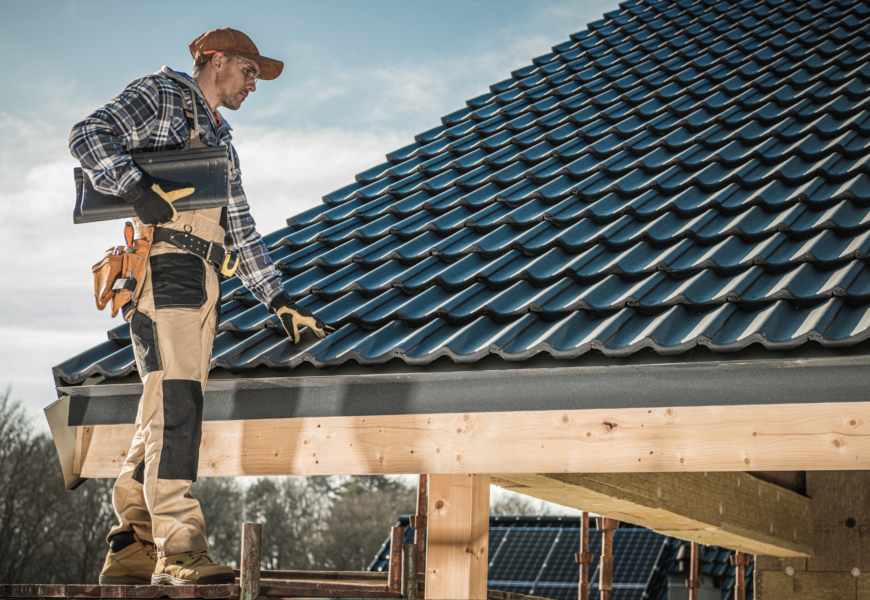Your roof is more than just a protective covering; it’s the first line of defense against the elements and a crucial component of your home’s structural integrity. Conducting a thorough roofing survey is an essential step in ensuring the longevity and performance of this vital asset. This comprehensive guide is designed to provide valuable insights and practical tips for conducting an effective roofing survey, covering key considerations from initial inspection and maintenance to identifying potential issues and choosing the right materials.
I. Importance of Roofing Surveys:
- Preserving Structural Integrity: A well-maintained roof is fundamental to preserving the structural integrity of your home. Regular surveys help identify issues early, preventing potential damage to the overall structure.
- Prolonging Lifespan: Proactive maintenance identified through surveys can extend the lifespan of your roof. Timely repairs and attention to emerging issues can prevent the need for premature replacements.
II. Initial Inspection:
- Visual Assessment: Begin with a visual assessment of the roof’s exterior. Look for signs of damage, such as missing or damaged shingles, curling edges, or visible wear and tear. Binoculars can be useful for a closer inspection.
- Interior Inspection: Inspect the interior of your home for signs of roof leaks, such as water stains, mold, or peeling paint. These indicators can help pinpoint areas that require attention.
III. Maintenance Practices:
- Gutter Cleaning: Regularly clean gutters and downspouts to ensure proper drainage. Clogged gutters can lead to water pooling on the roof, causing damage over time.
- Trimming Overhanging Branches: Trim branches hanging over the roof to prevent debris buildup and minimize the risk of damage during storms. Falling branches can cause significant harm to the roofing structure.
IV. Identifying Potential Issues:
- Shingle Health: Check the condition of shingles, looking for signs of cracking, curling, or granule loss. Damaged shingles compromise the roof’s ability to protect against water and weather.
- Flashing Inspection: Inspect flashing around chimneys, vents, and skylights. Damaged or loose flashing can lead to leaks, and addressing issues promptly prevents water intrusion.
V. Choosing the Right Materials:
- Consider Climate: Choose roofing materials based on your climate. Some materials, like metal or asphalt shingles, may be more suitable for specific weather conditions.
- Durability and Longevity: Invest in durable materials with a proven track record for longevity. Quality roofing materials can withstand the test of time and reduce the frequency of repairs.
VI. Professional Inspection:
- Schedule Regular Professional Inspections: Enlist the services of a professional roofing inspector at least once every few years. Professionals can identify subtle issues that may go unnoticed during routine inspections.
- Post-Weather Event Inspection: Following severe weather events, schedule a post-event inspection to assess potential damage. Quick identification and repair of storm-related damage can prevent further issues.
VII. DIY Repairs vs. Professional Help:
- Assessing DIY Capability: Evaluate your DIY capabilities for minor repairs such as replacing a few shingles or tightening loose flashing. However, for more complex issues, it’s advisable to seek professional assistance.
- Professional Expertise: Engage professional roofers for major repairs, replacements, or extensive damage. Their expertise ensures that the work is done safely and to the highest standard.
VIII. Budgeting for Roofing Maintenance:
- Set Aside Maintenance Budget: Allocate a portion of your home maintenance budget specifically for roofing. Regular upkeep is a cost-effective way to prevent major repairs or replacements down the line.
- Insurance Considerations: Review your homeowner’s insurance policy to understand coverage for roof repairs. Certain maintenance practices may be eligible for coverage, especially in the aftermath of severe weather events.
Conclusion:
A comprehensive roofing survey is a proactive approach to maintaining the health and longevity of your home’s most crucial element. Regular inspections, coupled with effective maintenance and timely repairs, can save you both time and money in the long run. By understanding the importance of roofing surveys and incorporating the tips outlined in this guide, you can ensure that your shelter remains steadfast, protecting you and your loved ones for years to come. Elevate your shelter by elevating your roofing survey practices.












